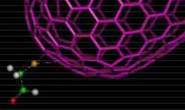
The technology works by forcing pairs of super-cooled rubidium atoms to change positions, allowing them to move into multiple positions and effectively assume different values based on those changes.
This could make them particularly useful for storing and processing information, which is currently done using a system of zeros and ones which only have two values.
"In the quantum world, instead of just the possibilities of zeros and ones, you have a range of possibilities," Trey Porto, a researcher at NIST, told Reuters.
"You can do the equivalent of multiple classical calculations at the same time in the quantum world."
The research uses isolated pairs of atoms contained within the wells or dips formed by ripples in six laser beams.
Porto's team has so far managed to force the atom pairs together and make them oscillate between zero and one.
"We are just demonstrating the most fundamental unit of what you would need to do quantum computing," Porto said.


.png&h=140&w=231&c=1&s=0)

_(20).jpg&h=140&w=231&c=1&s=0)



_(26).jpg&w=100&c=1&s=0)

 iTnews Executive Retreat - Security Leaders Edition
iTnews Executive Retreat - Security Leaders Edition












_(1).jpg&h=140&w=231&c=1&s=0)



